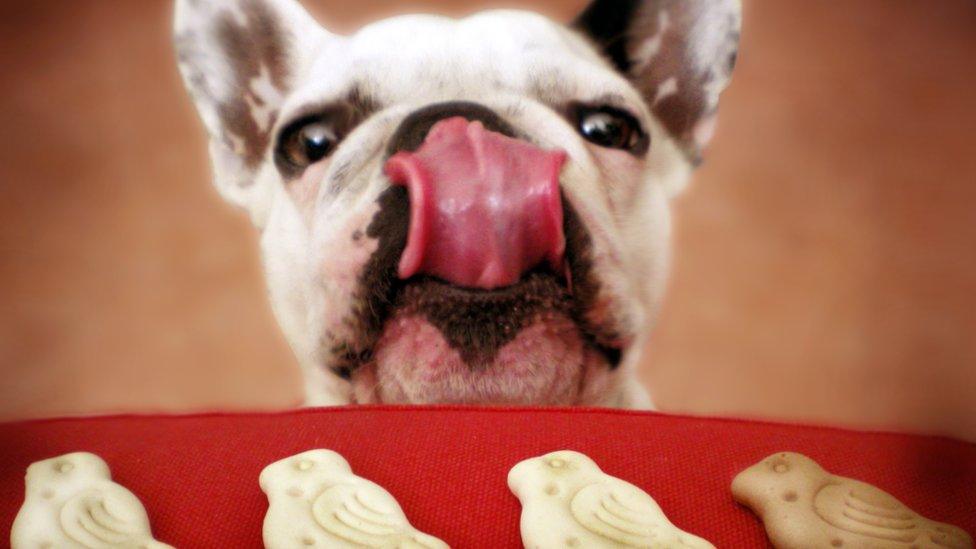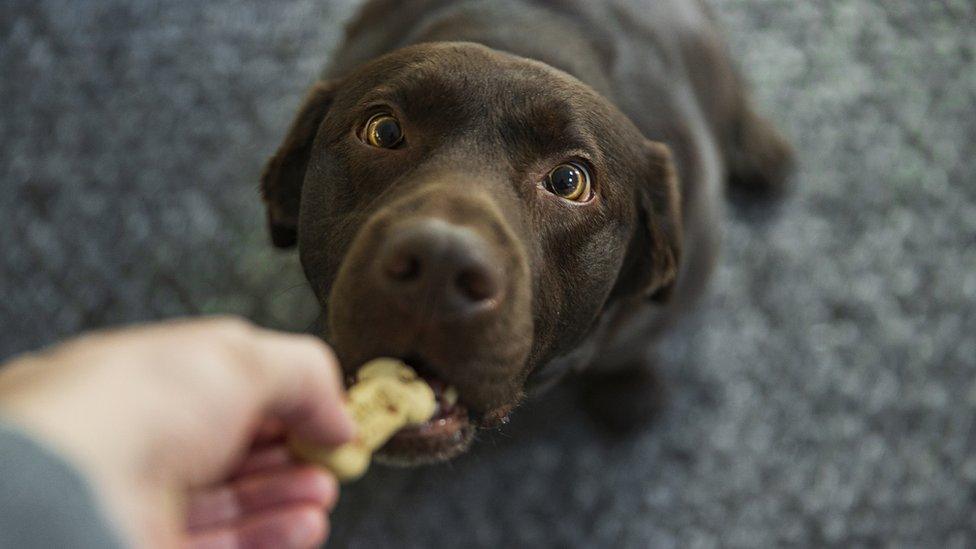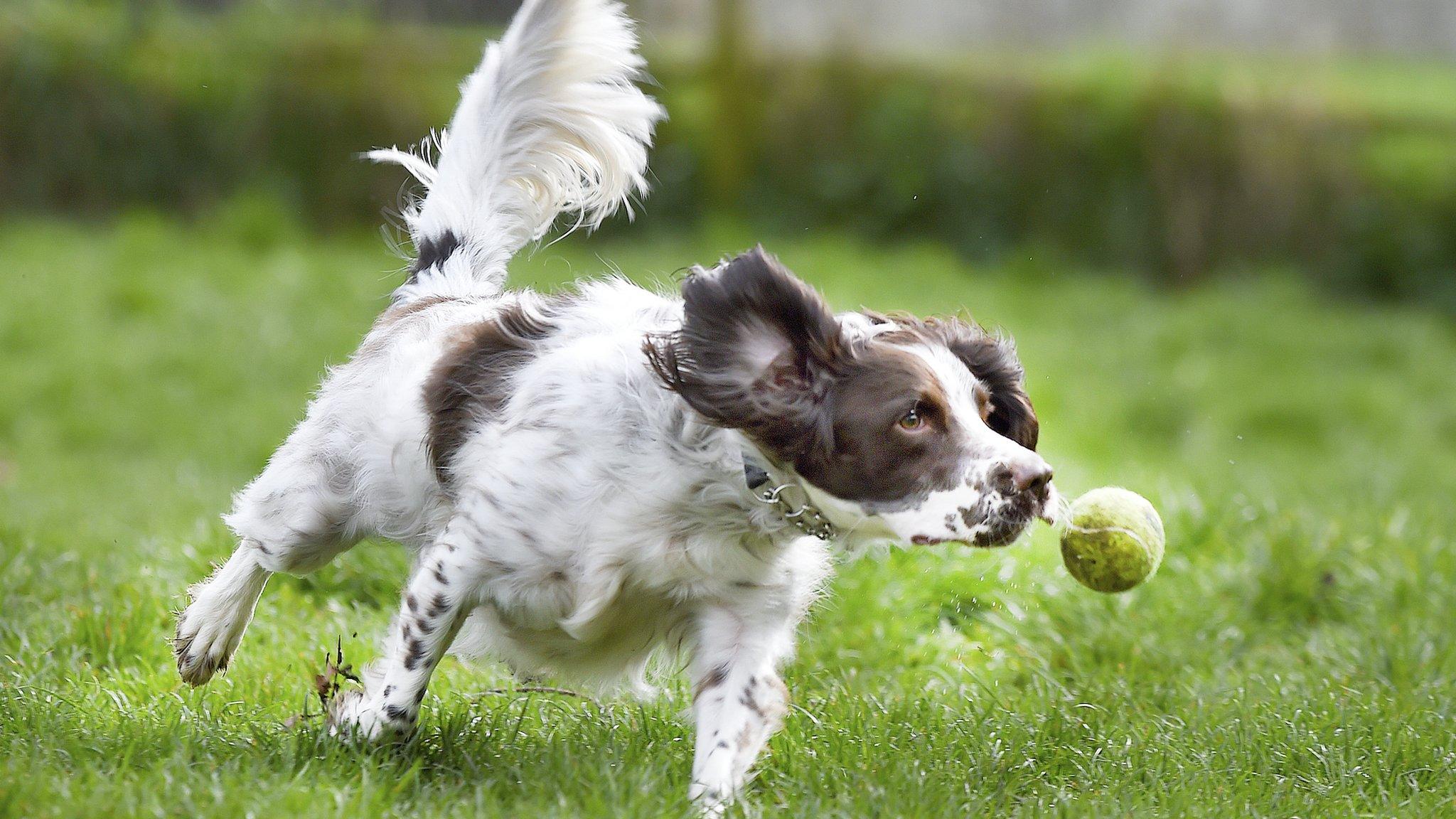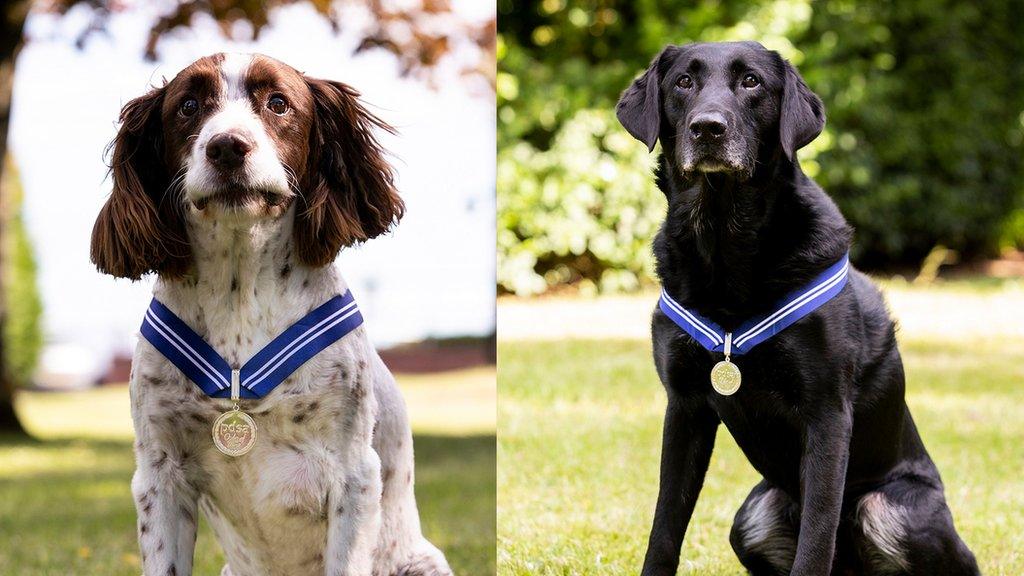Dogs: Can they tell what your intentions are?
- Published
- comments

Can dogs tell what your intentions are?
Dogs are very clever animals, they can tell if you are lying and they can learn new names easily, but have you ever wondered why they get so excited when they see their lead?
According to new research, dogs may be able to tell the difference between a human's action and their intention.
Researchers in Germany conducted an experiment using dog treats to test if a dog knew they were supposed to eat the treat or not.
They found that the dogs were able to tell the difference between a human taking a treat away deliberately, and someone accidently dropping one.
Read on to find out all about the test, and make sure you take our special pet-themed quiz and let us know how you get on in the comments!
In this video, Kate explains how you can teach your dog to perform the perfect Figure 8.
How did the doggo experiment work?
Researchers set up an experiment where they could pass treats through a gap in a screen to the dogs taking part.
They made three different attempts to give the dogs the treat and then the researchers compared the dogs responses.
The dog was offered a treat, but the researcher dropped it at the side of the screen and said "oops".
The researcher tried to offer the dog a treat, but the gap was blocked.
The researcher offered the treat but took it away and said "ha-ha".
"The idea of this experiment is that in all three situations they don't get the food for some reason," said Dr Juliane Bräuer, co-author of the research from Max Planck Institute for the Science of Human History.
The aim of the experiment was to see if the dogs knew that the treat was being intentionally withheld from them.

51 dogs took part in the experiment
What were the results?
The results showed that when the treat was deliberately taken away from them, the dogs waited for longer before attempting to walk around the screen to get it, compared to the other two attempts.
They were also more likely to stop wagging their tales or lie down.
This suggested to the researchers that the dogs were able to tell that the treats were intentionally being removed away from them.
The results were published in the journal, Scientific Reports. However, the scientists noted that more research is needed to understand whether dogs have previously learned not to approach food that has been taken away.
How much do you know about your pet? Test your knowledge here with our mega pet quiz - and let us know how you got on in the comments!
If you cannot see the quiz, click here.
- Published24 July 2018

- Published11 August 2021

- Published26 July 2021
